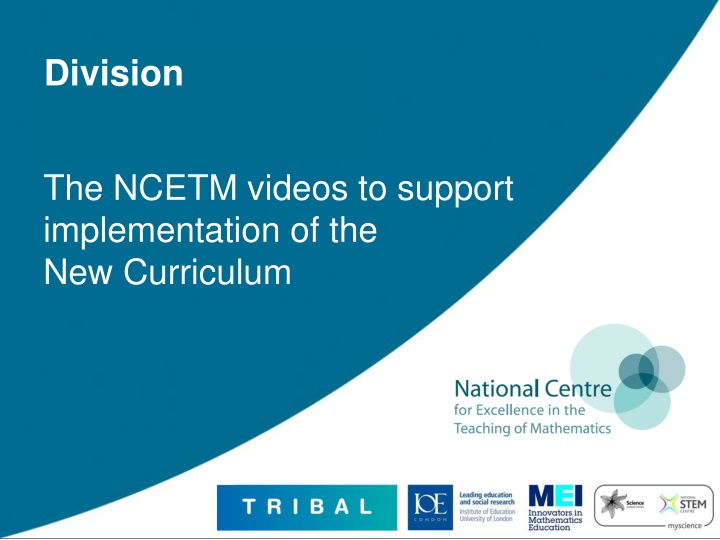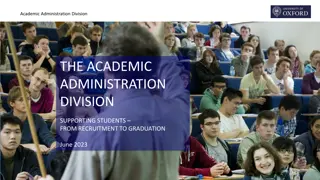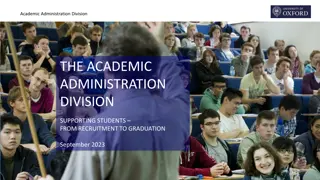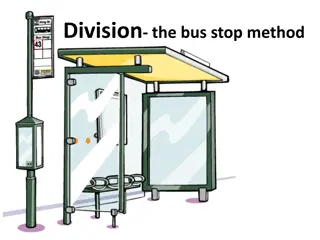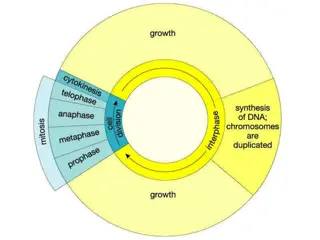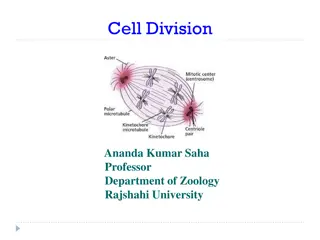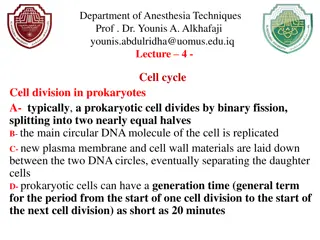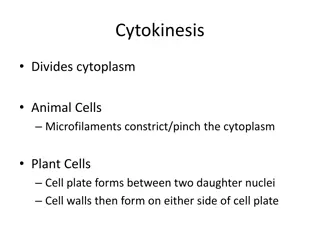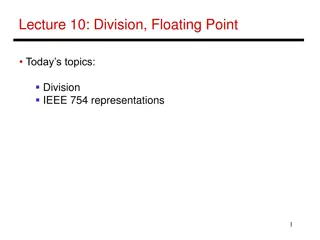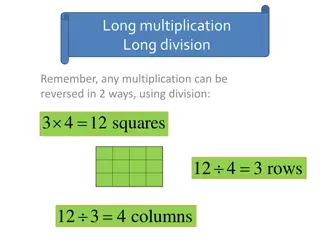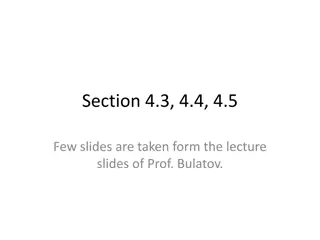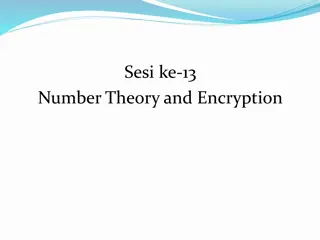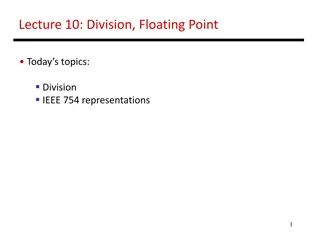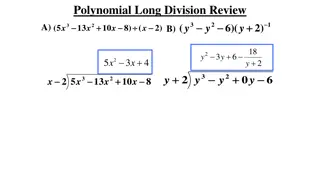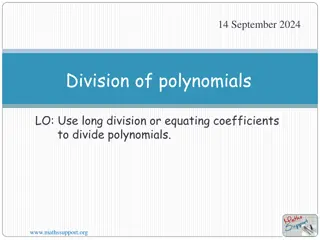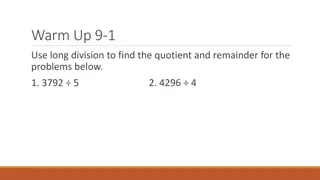Division
Enhance your teaching of division by utilizing NCETM videos aligned with the new curriculum. These instructional resources provide valuable guidance for educators looking to improve their division teaching strategies. Gain insights and tips on how to effectively implement division concepts in your classroom, helping students grasp mathematical principles with confidence. Explore a range of division topics through engaging video content, enhancing your teaching approach and fostering student learning in a meaningful way.
Download Presentation

Please find below an Image/Link to download the presentation.
The content on the website is provided AS IS for your information and personal use only. It may not be sold, licensed, or shared on other websites without obtaining consent from the author.If you encounter any issues during the download, it is possible that the publisher has removed the file from their server.
You are allowed to download the files provided on this website for personal or commercial use, subject to the condition that they are used lawfully. All files are the property of their respective owners.
The content on the website is provided AS IS for your information and personal use only. It may not be sold, licensed, or shared on other websites without obtaining consent from the author.
E N D
Presentation Transcript
Division The NCETM videos to support implementation of the New Curriculum
Areas Addressed Understanding the structure of division sharing and grouping (KS1) Moving to a written algorithm (KS2) Solving Problems involving division (KS3)
Division Key Stage 1 Video 1.1 Sharing and grouping: whole class
1.1 Sharing and Grouping: Whole Class Consider the representations used to illustrate the structure of the mathematics. Consider the child s reasoning when the question is asked If you share between two and you can t give them the same number...what would you do? How does the teacher respond to the question?
Division Key Stage 1 Video 1.2 Sharing and grouping in pairs
1.2 Sharing and grouping in pairs What strategies are used to support the pupils in working collaboratively? How are the pupils supported in recognising that sharing and grouping give the same answer? The two structures are required and should be clearly taught. Consider how the context will determine which way children think about division.
Division Key Stage 2 Video 2.1 Teacher introduces division vocabulary
2.1 Teacher introduces division vocabulary Consider the high expectations in terms of using the correct vocabulary. The teacher says When children have the key vocabulary they can speak in full sentences about their learning and they learn more Do you agree with this statement? Consider the strategy of learning the correct vocabulary alongside the procedure.
Division Vocabulary Things to notice: Children are given the opportunity to hypothesise and predict what the words might mean. The teacher says I m going to write this in a different way but it means the same thing. The children are given the opportunity to transfer their understanding from one representation to another.
Division Key Stage 2 Video 2.2 Representing division with place value counters
2.2 Representing division with place value counters Opportunities are given for children to discuss the vocabulary. Notice how the place value counters and the discussion by the children enable them to see that a group of 3 in the hundreds column is different from a group of 3 in the tens or ones columns. The place value system dictates that only multiples of 100 can be manipulated in the hundreds column. Consider how the counters help support this understanding.
Division Key Stage 2 Video 2.3 Using place value counters and recording division
2.3 Using place value counters and recording division Notice how the children work in pairs where one manipulates and the other records. They then swap roles. This has proved to be an effective strategy to develop both reasoning and fluency in the use of the formal written method.
Division Key Stage 2 Video 2.4 Division with remainders
2.4 Division with remainders Notice how the pupils estimating skills improve as they become familiar with the use of the place value counters for division. The pupils recognise a problem in the tens column and suggest that they will need to regroup . What do you think they mean by this, and what does this indicate about their understanding of place value?
Division Key Stage 2 Video 2.5 Division with exchange
2.5 Division with exchange ... Using the place value counters ... Not only do they understand the process of the division algorithm but they also understand the concept Notice how a thorough understanding of the physical process of re-grouping and exchange enables the children to use the language of re- grouping when talking about the algorithm.
Division Key Stage 3 Video 3.1 Problems involving division
3.1 Problems involving division The three aims of the curriculum are to develop fluency, reason mathematically and solve problems. What aspects of these aims are present in the pupils discussions?
3.1 Problems involving division An important aspect of problem solving is making a sensible a interpretation of the solution. How do these problems provide the opportunity for pupils to develop this skill?
